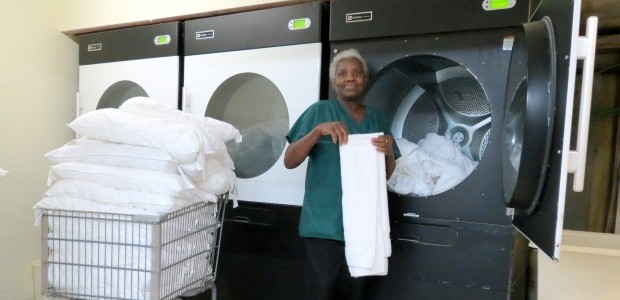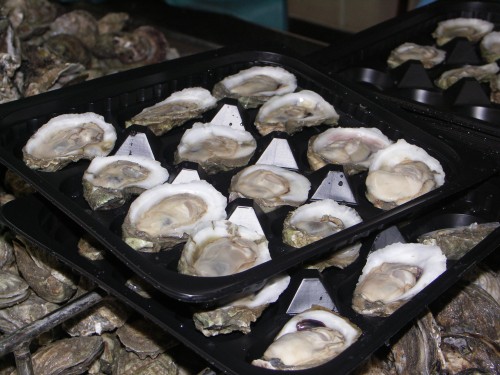
Quality Rose blooms: Hotel laundry lady’s ethic is enduring example
December 4, 2012EPA bans BP from new contracts
December 4, 2012Oyster demand will be met this Christmas season. Even if it means Louisiana processors have to make deals with companies that harvest in Mississippi or Texas waters.
Leftover concerns from the April 2010 BP Deepwater Horizon oil spill and storms including Hurricane Isaac have Louisiana oystermen admitting their harvest is down by approximately 35 percent from what had been listed as normal seasons. But they insisted it is not out for mollusk fans.
“In terms of Gulf oysters, we are going to have enough to satisfy holiday demand and work through the season,” Motivatit Seafood CEO Mike Voisin said.
The seventh-generation oysterman and Louisiana seafood industry leader said although harvest amounts east of the Mississippi River are down significantly, open waters in Texas and Mississippi will help Bayou State processors fill orders both locally and across the nation.
Louisiana’s oyster harvest has been down during the past two years, but Voisin said it is difficult to know how much of that is directly related to the BP spill and how much is a natural cycle that impacts oyster farming every few years.
“The harvest has been down since 2010. While this is a record low year, we saw those same records in the 1980s and rebound [combined with increased leases] two years later to the highest production we ever saw,” Voisin said.
Some Louisiana waters there have not seen a reproductive oyster cycle since the Deepwater Horizon disaster.
However, producers said Hurricane Isaac in late August helped generate a reproductive cycle during September in areas west of the Mississippi River. This may have counter-acted adverse impact from spring flooding during 2011, which caused a freshwater infusion that was said to have damaged oyster beds at that time.
The question of success for 2012 has not yet been determined, but should be fully known in two years, provided the industry does not experience any major challenges.
Voisin said management decisions not to harvest in certain areas following the BP spill negatively impacted statistical reports. Questions also exist regarding instances when oyster larva fails to attach to shells.
In addition, lawsuits against BP have held-up information involving some oyster beds because select records have been subpoenaed, thus not offering a full public picture of the produced product.
As a $300 million industry, Louisiana oyster production commonly leads the nation. It also provides approximately 3,500 jobs for the state.
According to statistics released by the National Marine Fisheries Service, 17.1 million pounds of Gulf oysters were harvested in 2011, up from 15.8 million in 2010, but less than the 22.8 million pounds harvested during 2009.
Calculations for the spring and autumn seasons of 2012 were not available from the Louisiana Department of Wildlife and Fisheries.
The NMFS did note that more than 60 percent of all Gulf of Mexico oysters during 2011 came from Louisiana waters.
Voisin said 2012 production in the Gulf is “fair to meet demand.” He was unable to provide specific estimates on harvest amounts.
Raw oyster prices are up for the 2012 season and averaged $35 per one-and-one-half bushel sack (approximately 100 pounds) last week, compared to $25 per sack during the same time period of 2011.
“Those prices have not influenced [retail] prices much because the demand cycle is still not where we were pre-Deepwater Horizon,” Voisin said. “We’re coming back, but we are not there yet.”
Voisin said the Louisiana oyster industry is working on a certification program to promote its product nationally. He said part of the reason to draw product from dealers in neighboring states is to insure work for his employees while also satisfying customers.
So, for home chefs serving oysters in dressing, fried, grilled, char-broiled, poached, baked, boiled, steamed, sautéed or straight from the shell, seasonal shucking should be satisfactory.
Oyster harvests are expected to be 35 percent lower than normal this year, but producers and processors contend there will be plenty to meet consumer demand for the Christmas season. While production costs per 100 pounds are about $10 higher than they were a year ago, retail prices are not expected to show much difference.










